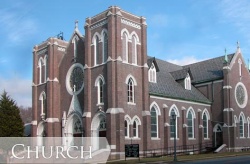From The Peopling of New York City
When the Irish first immigrated to New York in the mid-nineteenth century, they were very poor and most were illiterate. This is why they were the ones that took up the hard manual labor when no one else wanted to. Although the Irish Catholics started very low on the social status scale, by 1900, they had jobs and earnings about equal on average to their neighbors. As they years progressed, Irish-American children were staying in school longer, whether parochial or public, and many went on to higher secondary education. After 1945, the Catholic Irish consistently ranked toward the top of the social hierarchy, thanks especially to their high rate of college attendance.
Parochial Schools
In 1840 New York City lacked a public school system. Most of the state's school funds went to the Public School Society, a chartered philanthropic organization founded by Protestant laymen to provide elementary schooling for poor children and governed by a self-perpetuating board of trustees. Though nondenominational, the climate and orientation of its schools were such that most Catholics could not in good conscience enroll their children. Their objections included the recital of Protestant prayers and hymns, exclusive use of the King James Bible, and the employment of religious, literary, and historical texts displaying anti-Catholic biases, including the frequent use of the derogatory term "popery." With the election of William Henry Seward in 1838 helped push for legislation that called for public funding to not support teachings that were critical to the Roman Catholic faith and helped establish a privately-funded parochial school system. By 1870 the parochial school population reached 22,215. [1]
